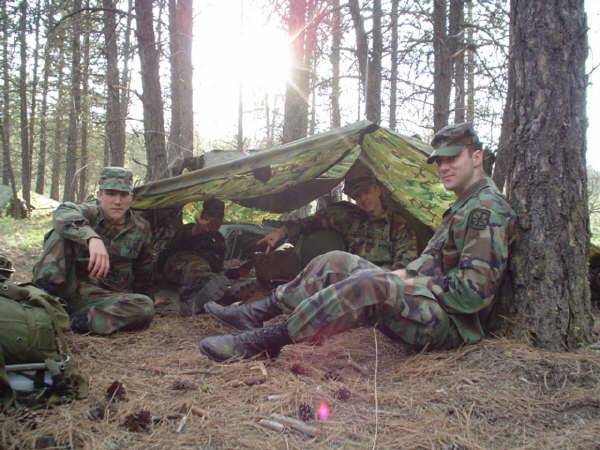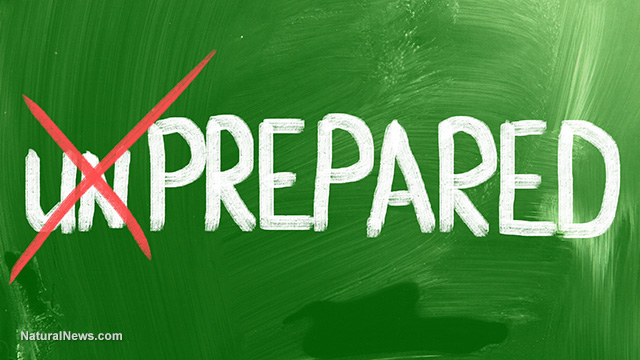How to prep if you’re bugging in when SHTF
03/14/2020 / By Arsenio Toledo

Preparing for a SHTF scenario can be a daunting task, but the first question you must ask before you start prepping is whether you’re going to bug in or bug out. If a disaster is impending and you don’t have a lot of time to gather your belongings and get out of dodge, you may not even be able to answer that question — which is why it may be a good idea to be prepared to bug in anyway. Here are seven key things to consider when bugging in during a SHTF scenario. (h/t to PlanAndPrepared.com)
Get home and stay home
If you’re at work, or running some errands when disaster strikes, go home immediately. Don’t try to gather supplies at the last minute, because that’s probably what everybody else is doing. Use this time to get home.
If you have the time to prep, figure out the route you’re going to take if disaster strikes while you’re away from home. Plan out alternate routes as well, along with contingency plans should you need to abandon your vehicle and set out on foot. (Related: How to prep your vehicle for emergency situations.)
Communicate with your team
There’s a chance that the other members of your team — be it your family, people who live with you or even your trusted neighbors — won’t be at your bug-in shelter when SHTF. You must learn to communicate when this happens.
Cell reception will probably be either poor or down completely, so you must learn how to properly communicate without it — whether that means picking up a landline, using walkie-talkies or even using a ham radio.
Be very detailed about what you want, and keep communication clear and concise. Keep in mind that your communications may not be private, especially if you’re using radios. Learn code words for specific locations instead of giving out full addresses. Also consider using prearranged signals — for example, a yellow ribbon tied to a tree in front of your home means everything’s safe, while a red ribbon means your team should stay away.
Secure your bug-in location
Once you’re home, you must secure it for the long term. This means strengthening your home from possible attackers. Reinforce windows and doors with wood planks and deadbolts. Use defensive landscaping techniques to learn which trees and shrubs to plant in your front yard. If you have a firearm, train with it regularly (as long as you have the ammunition for it). If you don’t have one, consider getting one or getting a member of your team one. Install tall, chain link fences that can slow down would-be intruders.
Assess the situation
You may not have the full picture of what’s happening when SHTF. Try and remedy this immediately. If you still have an internet connection, check your trusted news sources for information. If not, gather information on what’s happening around you and speculate. If there are cracks on the pavement, it’s probably an earthquake. If you hear gunfire in the distance, it may be an invasion. Ask your team or trusted neighbors and other individuals what they know.
Get some proper hardware to help you learn about what is going on. Get some emergency radios or a police scanner and tune in to what’s happening. Learn how to use a ham radio and connect with other preppers on the network. If you have the resources, invest in a drone that you can use to observe your surroundings, and get a bigger picture of the entire situation.
Establish a proper network
To maintain your knowledge of the post-SHTF world, you must learn how to continue gathering intelligence from other people. This means you must form friendships with people around you. Learn about the needs of your neighbors and establish a network of mutual aid and solidarity with them. In return, they can tell you everything they know about what’s currently happening in your wider world. If you still have an internet connection, you can even do this through social media.
Lie low
If everyone around you knows that you’re the most prepared person in the block, you’ll be seen as the biggest threat. You must learn how to keep a low profile. Don’t brag about your big stockpile of food and supplies. Blend in with your neighbors and don’t act like you have everything planned out. Learn some basic acting so you can look and act just as scared and bewildered as them. Lying low will keep you away from danger.
You should be able to figure out how bad your overall situation is within the first few days after the initial disaster. Hopefully, these tips about bugging in, gathering intel and forming strong, mutual aid bonds with your team and your neighbors can help you get through more than just a few days.
Sources include:
Tagged Under: bug in, chaos, defensive landscaping, disaster, emergency, emergency communication, Home Defense, how-to, off grid, preparedness, prepper, prepping, SHTF, survival, survival gear
RECENT NEWS & ARTICLES
COPYRIGHT © 2017 PREPAREDNESS NEWS



















